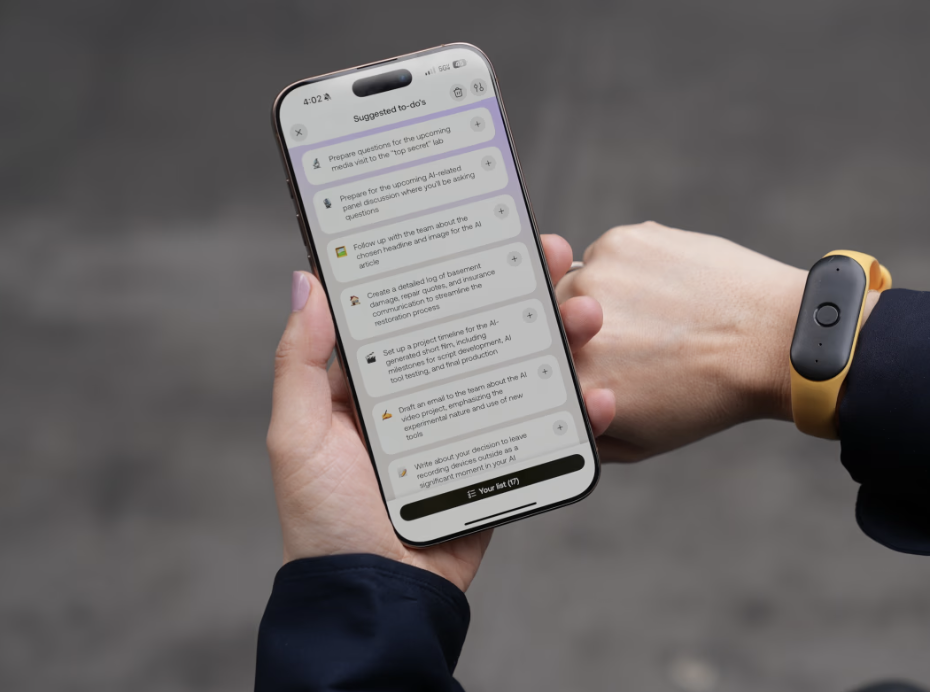By: Nicole Nguyen – wsj.com – July 23, 2025
The tech giant’s acquisition is its latest move into the burgeoning AI-gadget business.
It’s funny. After a decade of Amazon AMZN 3.37% saying Alexa isn’t listening to your every word, the company is buying a bracelet that can.
Bee’s wearable transcribes all the conversations in your day—including when you talk to yourself. It then uses artificial intelligence to turn that giant word soup into a searchable history, offering up key events and even to-do lists based on your chatter.
Bee Chief Executive Maria de Lourdes Zollo said the company, which imagines “a world where AI is truly personal,” is joining Amazon in a LinkedIn post. An Amazon spokeswoman said that while a deal is signed, the agreement isn’t yet closed. For Amazon, it’s a small move in a potentially huge future market.
I first saw the bracelet earlier this year on the arm of my colleague Joanna Stern. As we were about to get into some gossip, Joanna pointed at her wrist—and warned me Bee was listening.
Joanna was impressed at how useful it was, though she wasn’t sold on the privacy trade-offs. Rather than saving audio, Bee only keeps a transcription. Still, the creep factor is high.
We have long had listening devices in our pockets and our homes. For many, Amazon’s Echo speaker was the first. Amazon has reminded us, for years, that its voice-activated speakers only start listening once they hear the “wake word.” Even if you didn’t necessarily utter it.
Now, Amazon is interested in a wearable device that’s always listening—no wake word needed. Why might that be? Because generative AI thrives when parsing loads of data, and the more context it gathers on the doings of your life, the more helpful it can be. Plus, that data, when collected from enough people, can help train the very AI models themselves.

This Bracelet Records Everything I Say, Swearing Included.
The Amazon spokeswoman didn’t provide details on the acquisition or the company’s motivations but said Amazon deeply cares about customer privacy and security, and designs products so customers can be in control of their experience. The same would apply to Bee, she said. Bee’s Zollo didn’t respond to a request for comment.
Amazon stepped up its generative-AI game with the beta release of Alexa+, a smarter, more conversational upgrade of the original voice assistant. In my recent testing, it can take on almost any query that ChatGPT can. Like other chatbots, it’s prone to mistakes.
Bee is one of a growing pack of AI gadgets out there. Google has Pixel earbuds that put its Gemini AI in your ear, while Meta Platforms has its Ray-Ban glasses with a built-in AI buddy. Samsung recently showed off Gemini-infused Galaxy devices. Apple has been slower on the uptake but it, too, wants to stuff more AI smarts into the iPhone. Former Apple design chief Jony Ive is developing a brand-new device for OpenAI.
These products may have different shapes and sizes but they’re all window dressing for the same thing: easy, personalized access to a bot living in the cloud.
The AI revolution is just getting started. Tech companies will be trying lots of different ideas in the coming months and years to see what sticks. Will the clever but creepy bracelet ultimately prove its usefulness? Or will bars and other businesses recall their Google Glass bans, and declare Bee-free zones?
To see this article in its entirety and to subscribe to others like it, please choose to read more.
Source: Why Amazon Is Buying Bee, an AI Bracelet That Records Everything You Say – WSJ
 Listen Online
Listen Online Watch Online
Watch Online Find a Station in Your Area
Find a Station in Your Area









 Listen Now
Listen Now Watch Online
Watch Online
